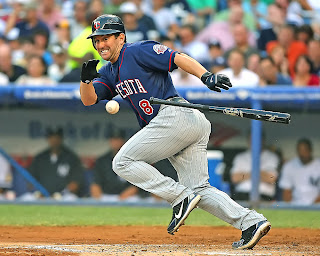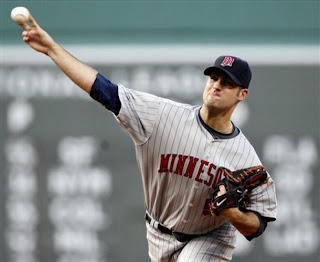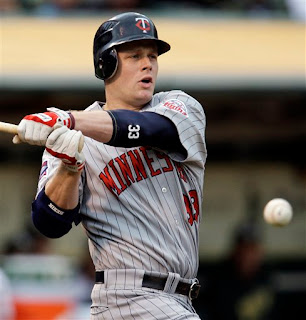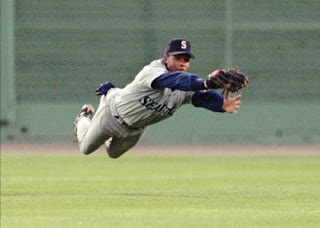 Fun loving "Everyday" Eddie Guardado is finally retiring. The long road for his rubber left arm has come to a close. "I think its time to go home and be a daddy," Guardado said after announcing his probable retirement at the end of this season. Becoming a full time dad to his three children aged 4 through 12 will bring an end to his 17 year career which began in 1993. Guardado is a character that many teams seemed to have had once upon a time ago, but characters today in baseball are in short supply. Guardado's always been known for practical jokes. The kind that keep teams loose. He'd move players cars, put peanut better in their shoes and hot sauce in their jocks. Once while with the Twins Guardado took David Ortiz's shorts. Ortiz wondered aloud where they went and Guardado told him to check the freezer. They were folded nicely, but freezing them was not enough for Guardado. He had smeared peanut butter on the inside of the shorts before freezing them. Ortiz was so pleased to have his shorts back and thawed out he never saw the peanut butter coming. As is tradition a prankster must be paid back and an unnamed Twin once took all of Guardado's belongings in his locker and bolted them down onto the floor: glove, spikes, shower shoes and even his toothbrush. It took 20 minutes to unbolt the items while Paul Molitor, Terry Steinbach and Bob Tewksbury laughed at his predicament. I'm sure it was a prank Eddie Guardado was envious of...envious that he didn't come up with it first.
Fun loving "Everyday" Eddie Guardado is finally retiring. The long road for his rubber left arm has come to a close. "I think its time to go home and be a daddy," Guardado said after announcing his probable retirement at the end of this season. Becoming a full time dad to his three children aged 4 through 12 will bring an end to his 17 year career which began in 1993. Guardado is a character that many teams seemed to have had once upon a time ago, but characters today in baseball are in short supply. Guardado's always been known for practical jokes. The kind that keep teams loose. He'd move players cars, put peanut better in their shoes and hot sauce in their jocks. Once while with the Twins Guardado took David Ortiz's shorts. Ortiz wondered aloud where they went and Guardado told him to check the freezer. They were folded nicely, but freezing them was not enough for Guardado. He had smeared peanut butter on the inside of the shorts before freezing them. Ortiz was so pleased to have his shorts back and thawed out he never saw the peanut butter coming. As is tradition a prankster must be paid back and an unnamed Twin once took all of Guardado's belongings in his locker and bolted them down onto the floor: glove, spikes, shower shoes and even his toothbrush. It took 20 minutes to unbolt the items while Paul Molitor, Terry Steinbach and Bob Tewksbury laughed at his predicament. I'm sure it was a prank Eddie Guardado was envious of...envious that he didn't come up with it first.For those that have a long memory go back in time to 1993 when Eddie Guardado was first called up to the Minnesota Twins. The Twins were currently going full circle in the standings: worst to first and back to worst again and again and then again. Guardado came to the Twins in 1993 as a young pitcher who had a bad case of acne. The kind of acne that keeps a 16 year old from seeing the outside world on the weekends. The acne went away, but Eddie remained a Twin through 2003. In the beginning the Twins wanted him to be a starter and he did as he was told starting 25 games on those disastrous Twins teams in 1993 and 1994. He didn't have a starters mentality or the arm strength and settled into the bullpen pitching in middle relief and saving the occasional game. In 2002 the Twins were threatened with contraction and Guardado was given the task of closing games on what could have been the final assemblage of players called the Minnesota Twins. Everyday Eddie took to the closers role better than I and many others expected that season and he saved a superlative and league leading 45 games. Without undue hyperbole Eddie Guardado and the 2002 Minnesota Twins literally saved the franchise that year. They won 94 games, their division and played baseball that mattered. A feat Twins fans had not seen since 1992. If you witnessed Eddie G pitch you know it was never easy for him. He desired and even thrived on the pressure of extracting himself from an inescapable situation. Usually those situations were of his own volition. Never was his rollercoaster ride to a save more in effect than in the crucial Game 5 of the 2002 ALDS versus the Oakland A's. Brad Radke had pitched his greatest game as a Twin on the road that afternoon going 6.2 bulldog-like innings. The Twins carried a perilous 2-1 lead into the top of the ninth when AJ Pierzynski hit a soon to be vital 2 run home run and the Twins pushed the lead to 5-1. Guardado pitched the final inning trying to close the door. The door resisted and his line for the ninth inning was an unsightly 4 hits, 3 runs and 1 home run given up. It was an inning that resembled a car wreck. You know you shouldn't look, but at the same time can't resist. Mercifully for Twins players and fans Guardado coaxed Ray Durham into hitting a foul ball flyout to Denny Hocking to eliminate the 103 win Athletics and put the Twins into the Amercan League Championship series. In 2003 Eddie saved 41 games, but the Twins probably felt like most fans did. The high wire act could only go for so long before crashing down and Everyday Eddie moved along to Seattle. He hopscotched from Seattle, Cincinnati and then to the Rangers. Last season the Twins tried saving a beleaguered bullpen by trading for Guardado late in the season, but it felt forced like a blind date. Eddie G knew he wasn't the same guy who saved 45 and 41 games in 2002 and 2003. He had a 7.71 ERA in 7 innings for the Twins and went back to the Rangers last off season. On Monday Eddie Guardado made his 906th career appearance tying him with Cy Young on the all time list. A rubber arm indeed and ending a career alongside Cy Young is not a bad way to go out, especially for a prankster.












